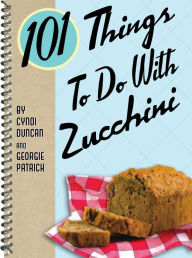Zucchini-palooza continues! Here’s a great recipe I found in the June 2012 issue of Cooking Light. This recipe isn’t for a busy weeknight – it takes a little time, but it’s well worth it! Make extra, because your family will really like the unique flavor!
Persian Rice – Stuffed Zucchini with Pistachios and Dill
Ingredients
6 medium zucchini
1 tsp salt
1/2 tsp pepper
3 tblsp olive oil
3/4 cup jasmine rice (I used brown rice)
6 cardamom pods (or the equivalent in ground cardamom)
1 cinnamon stick (I just used about 2 tsp of ground cinnamon)
1/2 tsp ground cumin
1/8 tsp ground red pepper (I used a little extra)
1 1/4 cups water
8 dried apricots, coarsely chopped (about 1/3 cup – I added more because I love dried apricots)
1/2 tsp grated orange rind
2 tblsp fresh lemon juice
2 tblsp fresh orange juice
1/3 cup chopped shelled dry roasted, unsalted pistachios (I used salted and didn’t chop mine, because I like lots of pistachio crunch and taste)
1/4 cup chopped fresh dill
1/4 cup chopped parsley
2 ounces goat cheese, crumbled (about 1/4 cup)
1 15 oz. can chickpeas, rinsed and drained
Instructions
- Preheat oven to 375 degrees
- Cut zucchini in half lengthwise and scoop out pulp, leaving about 1/2 inch thick shell. Chop pulp. Place zucchini halves, cut sides up on an oiled baking sheet and sprinkle with 1/2 of the salt and pepper. Bake for about 15 minutes.
- Heat a medium saucepan over medium heat. Add 1 tblsp oil. Add rice, cardamom, and cinnamon, and cook for about 5 minutes. Add 1/4 tsp salt, cumin, red pepper, and 1 1/4 cups water (I usually use double the water as rice, so if you have 3/4 cup rice, use 1 1/2 cups water) Bring to a boil. Cover and reduce heat, and simmer 12 minutes, or until the water is absorbed. Cover and let stand 10 minutes.
- Discard cardamom (if you used pods) and cinnamon stick (if you used a stick)
- Spoon rice mixture into a large boil.
- Combine remaining 2 tblsp of oil, remaining salt and pepper, orange rind, and juices in a small bowl. Stir with a whisk. Add dressing, reserved zucchini pulp, pistachios, and remaining ingredients to rice mixture and mix.
- Preheat broiler to high (I set mine at 450 degrees)
- Spoon rice mixture into each zucchini shell and broil for about 6 minutes or until lightly browned.






![[201408011826324.jpg]](https://blogger.googleusercontent.com/img/b/R29vZ2xl/AVvXsEgC43Veep2g-zMvzFccI0lltwCfL9sZXuAP-i-W91GExe9q4KpJIDxkqMr0dfdQzUgdlPbMheRJ4C3fAAolFoylcUJWWh2Ft70xoHNyHdfwiNDiTSz9mPXEQDV2OvvzrRoI-ZLwEXapd2oa/s1600/201408011826324.jpg) I’ve got WAY too many unripened tomatoes this year. What to do? Fry them, of course – fried green tomatoes are one of those summertime treats that you just have to enjoy NOW! No fancy recipe; it’s pretty simple. Set up 3 bowls – one with flour, one with beaten egg, and one with panko bread crumbs. Slice some green tomatoes. Roll the tomato slices in flour, dunk in egg, and roll in panko. Heat canola oil in a frying pan and fry the tomatoes until golden brown. Enjoy with a nice cucumber yogurt or tsatsiki!
I’ve got WAY too many unripened tomatoes this year. What to do? Fry them, of course – fried green tomatoes are one of those summertime treats that you just have to enjoy NOW! No fancy recipe; it’s pretty simple. Set up 3 bowls – one with flour, one with beaten egg, and one with panko bread crumbs. Slice some green tomatoes. Roll the tomato slices in flour, dunk in egg, and roll in panko. Heat canola oil in a frying pan and fry the tomatoes until golden brown. Enjoy with a nice cucumber yogurt or tsatsiki! Included in the list are well-known species such as polar bears and whooping cranes, little known species such as tan riffleshell and Kentucky arrow darter, and some of my favorites like the Kemp’s Ridley sea turtle, dunes sagebrush lizard, and Wyoming pocket gopher. Assuming that we care about these species and their roles in the ecosystem (see post "
Included in the list are well-known species such as polar bears and whooping cranes, little known species such as tan riffleshell and Kentucky arrow darter, and some of my favorites like the Kemp’s Ridley sea turtle, dunes sagebrush lizard, and Wyoming pocket gopher. Assuming that we care about these species and their roles in the ecosystem (see post "
 the facility really worked hard to protect these little birds, which wasn’t always easy. Piping plovers scratch nests into beach sand and lay their camouflaged eggs in these scrapes. The eggs are particularly vulnerable to predators, such as gulls, foxes, raccoons, and domestic cats. Another danger for the eggs and hatchlings is nest abandonment by the adult birds, due to disturbance. Thus, protection of the plovers is not always popular, because some beaches must be closed during nesting season. The folks at Cape May did a great job of public education to encourage protection of these little birds – they even held a plover 5K run!
the facility really worked hard to protect these little birds, which wasn’t always easy. Piping plovers scratch nests into beach sand and lay their camouflaged eggs in these scrapes. The eggs are particularly vulnerable to predators, such as gulls, foxes, raccoons, and domestic cats. Another danger for the eggs and hatchlings is nest abandonment by the adult birds, due to disturbance. Thus, protection of the plovers is not always popular, because some beaches must be closed during nesting season. The folks at Cape May did a great job of public education to encourage protection of these little birds – they even held a plover 5K run!








